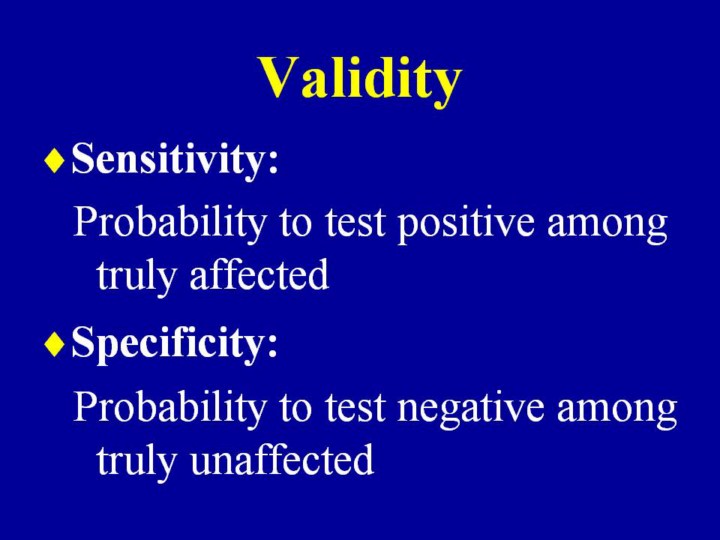 |
The
validity of a screening program is measured by its sensitivity and
specificity. Sensitivity is the ability of screening to test positive for
truly affected people. Specificity is the ability of screening to test
negative for truly unaffected people. The methods of calculating these
measures are given in last slide. Obviously it is desirable to have a
screening program that is both highly sensitive and highly specific. Usually
this is not possible as there are some people who are clearly affected and
some who are clearly unaffected but there are some who fall in between. In
this situation, the cutoff between affected and unaffected is an arbitrary
decision. Any screening program that has increased ability to avoid missing
a true case will increase the number of unaffected individuals who will be
wrongly picked as positive by the screening program. Thus, whether we need
a sensitive or a specific program depends on the condition and its burden on
health. Generally we say that those skipped as negative by mistake (false
negative) are important to avoid especially in severe conditions while those
picked wrongly as positive (false positive) are just an alarm.
|
